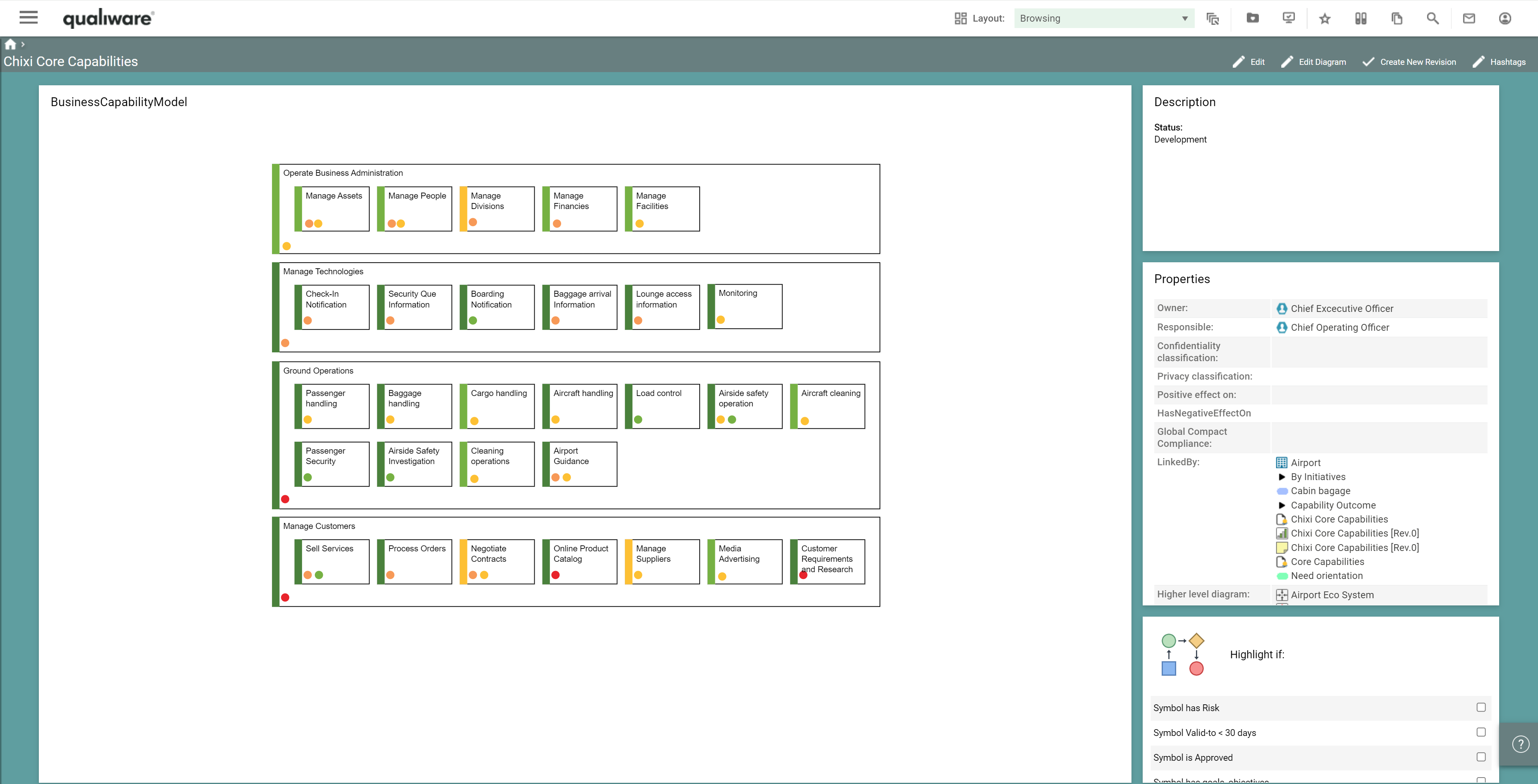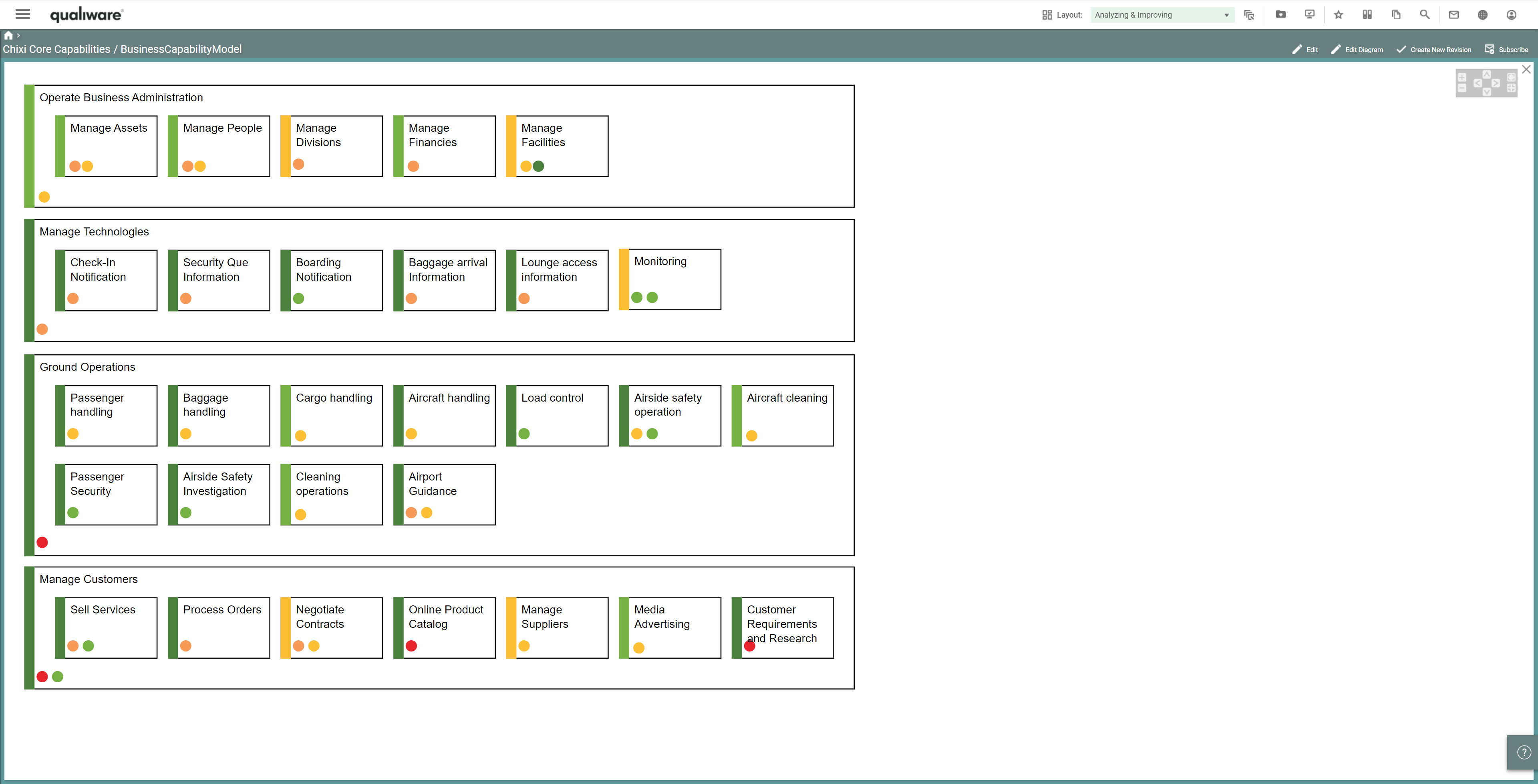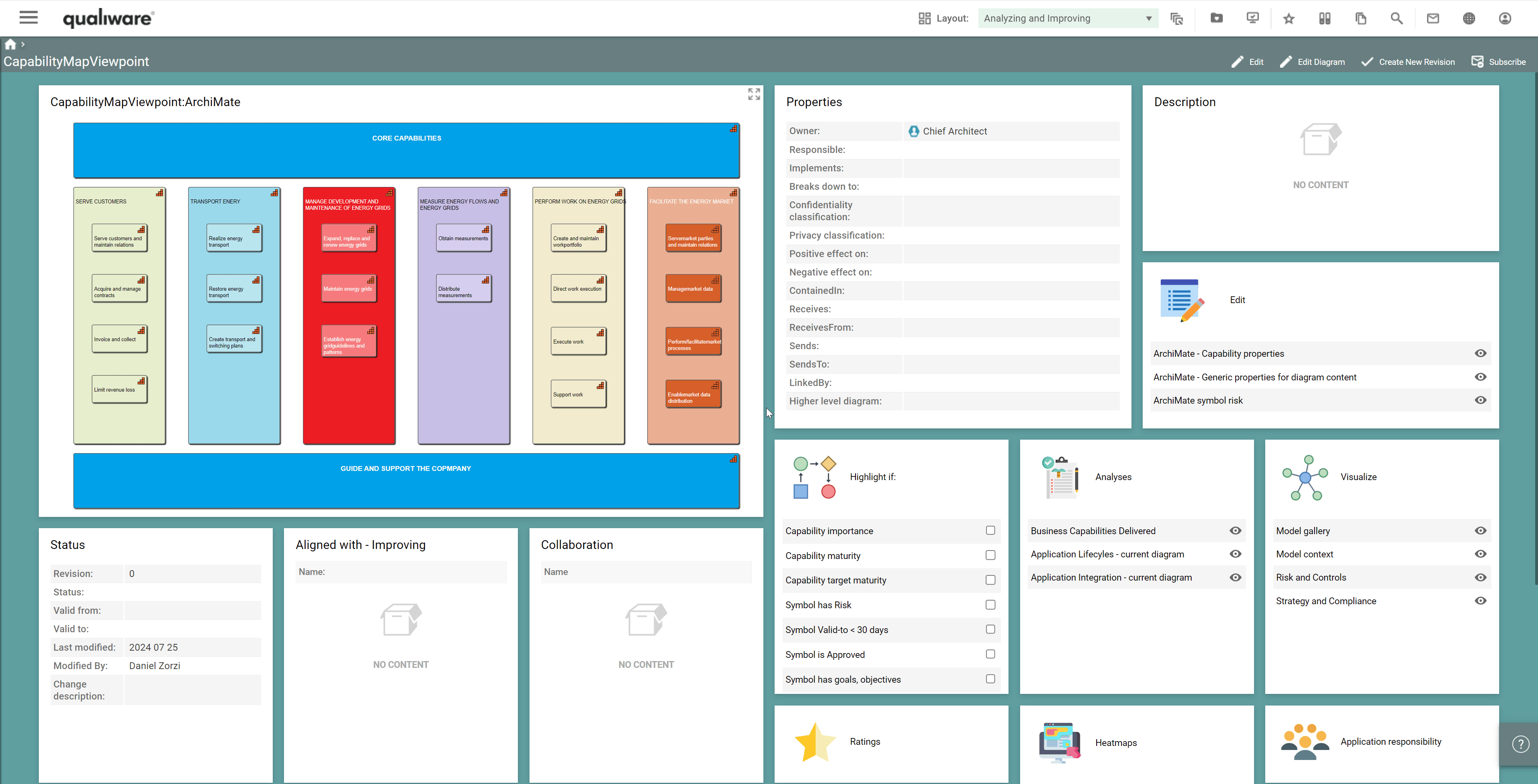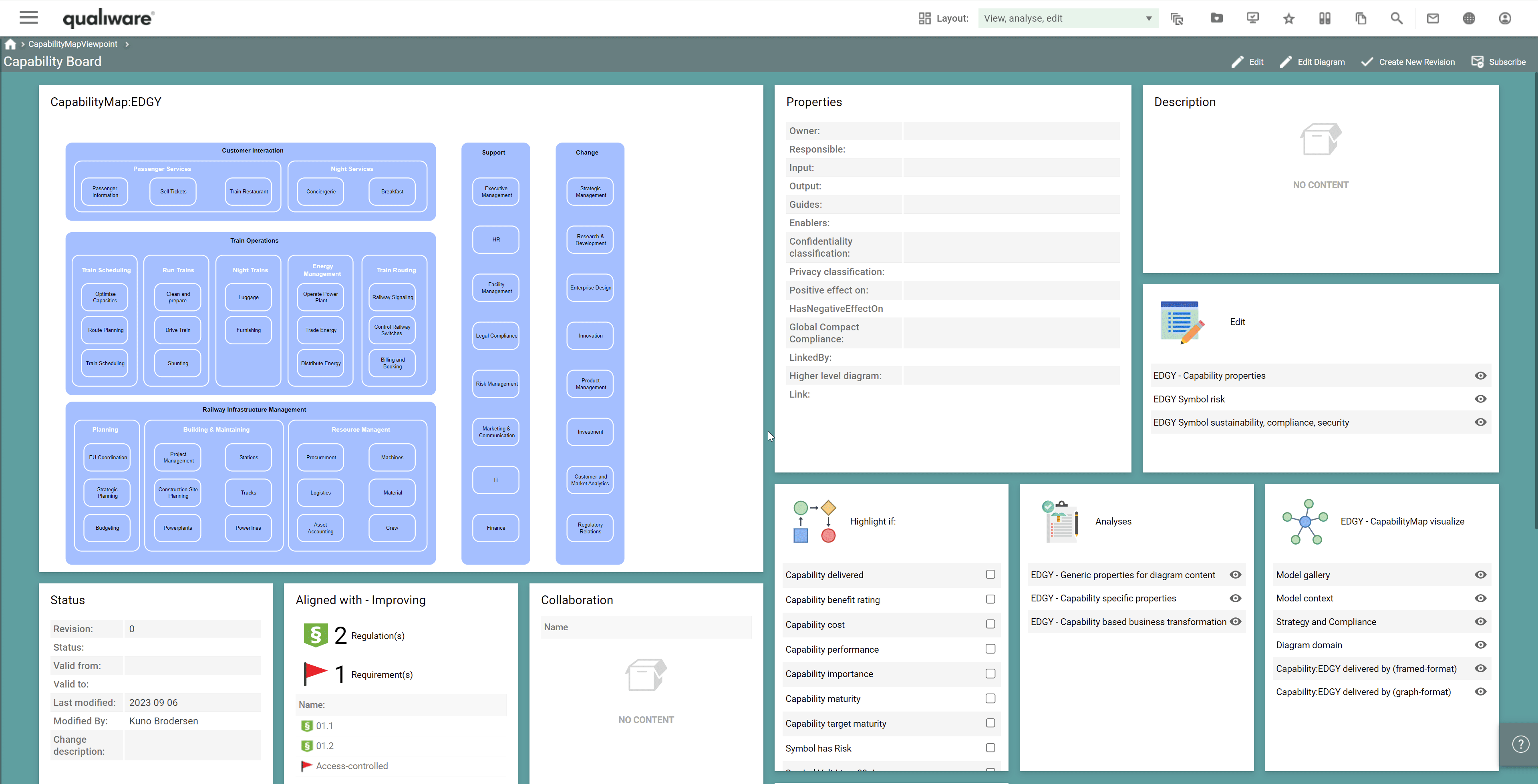Once business capabilities have been named and defined, the next step is to categorize them. This categorization, known as a capability map, serves as an important tool in gaining a comprehensive overview of the organization’s capabilities.
The map represents the completed set of unified capabilities in a structured manner by grouping them into categories. Through mapping, organizations can effectively compare various capabilities, thus gaining deeper insights into strengths and weaknesses.
The visual representation of the capability map significantly aids in analytical processes and strategic planning across departments.
Upon completion of the map, organizations are better equipped to strategically plan the development of capabilities, discerning areas for optimization, phasing out redundant capabilities, addressing overlaps, or identifying areas where capabilities are entirely absent.
The process of creating a capability map entails three fundamental steps:
1) Defining capabilities
2) Creation of categories
3) Definition of tiers and levels
Creation of categories and classifications
Categorization aids in clarifying the interconnectedness of capabilities across various departments, functions, and responsibilities, thereby enhancing organizational ability to adapt to potential growth.
While the organizational structure is oftentimes structured in a similar manner to Business Capabilities, it is not a perfect alignment. Oftentimes different organization units can create or deliver one single Business Capability. So, to avoid silos and duplication it is recommended that the organizational structure is not a direct translation to the capability map, but rather informs the capability map.
Tiers and Levelling
Business Capabilities will often have different tiers such as:
- Strategic (Capabilities related to strategy and direction)
- Core (Typically customer-facing elements)
- Supporting Business Capabilities (The business capabilities essential to function but is supporting internally)
Each tier all represents Level 1 Capabilities but from different perspectives.
On top of that comes levelling, which is the process of decomposition which represents a more granular level of detail for each capability. This makes the Business Capability Map easier to read and be processed from different stakeholders. The amount of Capability levels may be chosen depending on the business and the organizational context.
Definition of levels
To understand the interplay between different capabilities, arranging them into levels to establish a hierarchy can be effective. The methodology for defining levels may vary among organizations. Some opt to structure levels based on the organizational hierarchy, with Level 1 primarily encompassing management-related capabilities, followed by a cascading distribution of responsibilities across subsequent levels. Alternatively, levels can be defined based on functionality, allowing for the breakdown of larger capabilities into more manageable components. It is common to see between three to six levels of business capability decompositions in a Business Capability Map.
In the QualiWare BusinessCapabilityModel, Ground Operations category is designated as Level 1. Subsequently, it undergoes further decomposition into smaller capabilities such as “Passenger Handling” and “Airport Guidance.”
By conducting a thorough analysis and assessment of different capabilities, organizations can identify areas for improvement and work out the appropriate level at which enhancements are required to positively impact performance across the hierarchy.
Archimate Capability Map
QualiWare also supports other CapabilityMaps. Having a fully fledged Archimate modelling language, it is possible to use a CapabilityMapViewpoint:Archimate.
EDGY Capability Map
As QualiWare also supports the modelling language of EDGY, it is possible to map the Capability Map in CapabilityMap:EDGY.



